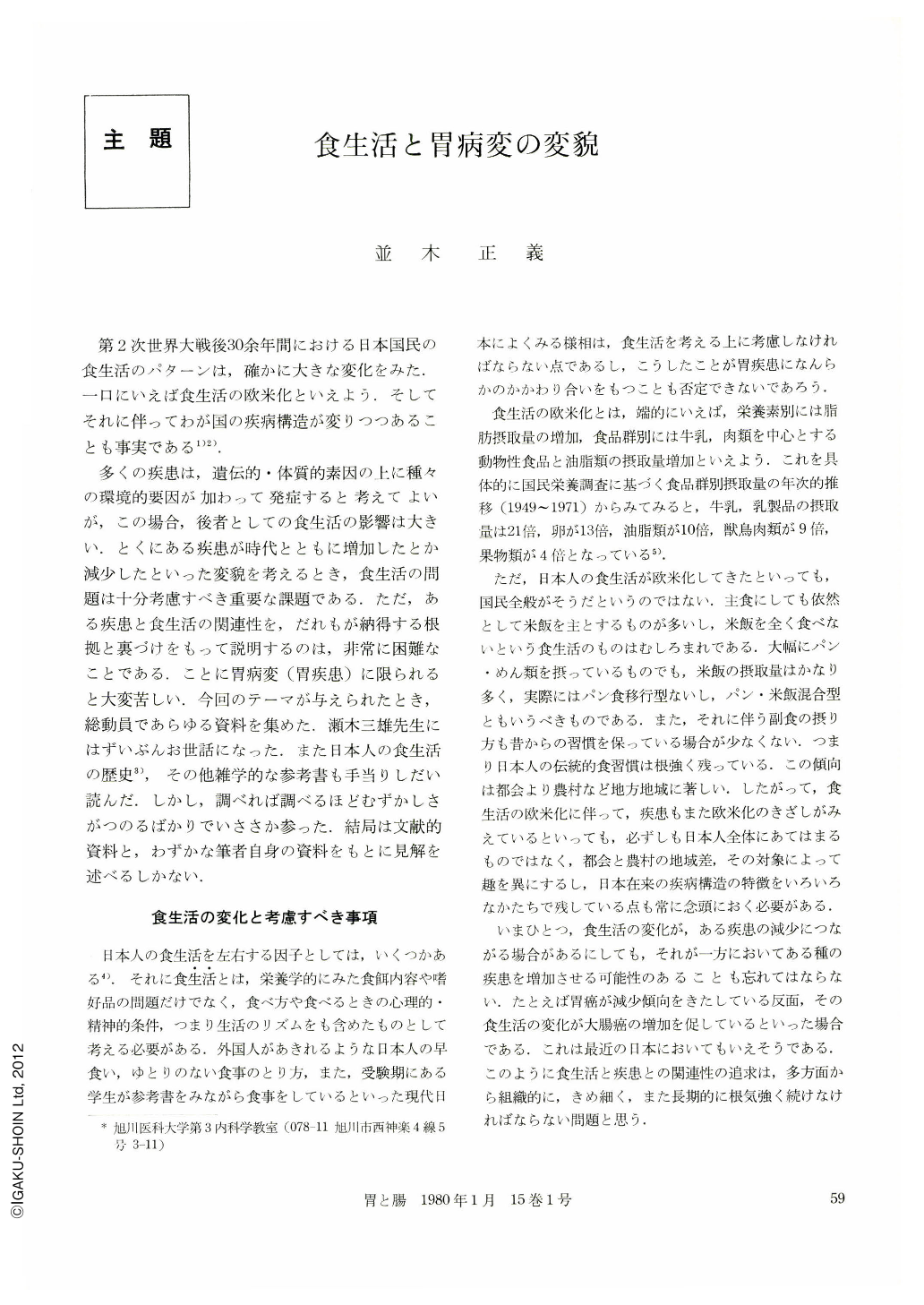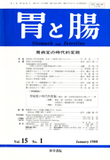Japanese
English
- 有料閲覧
- Abstract 文献概要
- 1ページ目 Look Inside
第2次世界大戦後30余年間における日本国民の食生活のパターンは,確かに大きな変化をみた.一口にいえば食生活の欧米化といえよう.そしてそれに伴ってわが国の疾病構造が変りつつあることも事実である1)2).
多くの疾患は,遺伝的・体質的素因の上に種々の環境的要因が加わって発症すると考えてよいが,この場合,後者としての食生活の影響は大きい.とくにある疾患が時代とともに増加したとか減少したといった変貌を考えるとき,食生活の問題は十分考慮すべき重要な課題である.ただ,ある疾患と食生活の関連性を,だれもが納得する根拠と裏づけをもって説明するのは,非常に困難なことである.ことに胃病変(胃疾患)に限られると大変苦しい.今回のテーマが与えられたとき,総動員であらゆる資料を集めた.瀬木三雄先生にはずいぶんお世話になった.また日本人の食生活の歴史3),その他雑学的な参考書も手当りしだい読んだ.しかし,調べれば調べるほどむずかしさがつのるばかりでいささか参った.結局は文献的資料と,わずかな筆者自身の資料をもとに見解を述べるしかない.
The association of alimentary tract lesions with eating habits must be considered with great concern. Westernization of eating habits in Japan since World War Ⅱ has, without a doubt, brought about a change in the incidence and kinds of diseases in present day society. Changes in eating habits are only one factor out of many of the enviromental factors but this Westernization has had an influence on the whole body along with other complex factors. From this view point we have to consider the above problem from its many facets.
If confined to only stomach lesions, we have not observed and marked change, but we must keep several points in mind when considering the problem discussed in this paper.

Copyright © 1980, Igaku-Shoin Ltd. All rights reserved.


